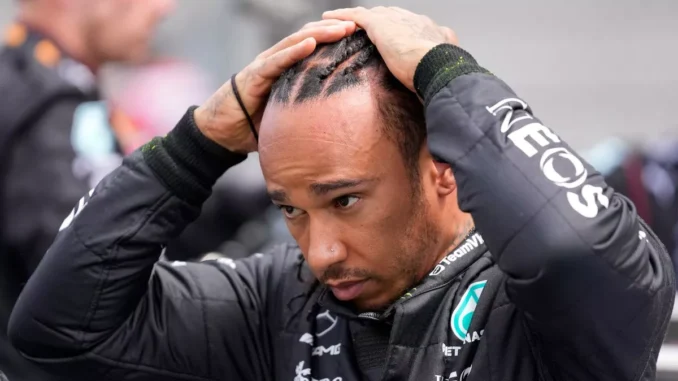
Mercedes lobbied for F1 rules to be changed as they suffered from the ‘porpoising’ phenomenon in 2022, but were then caught out after those tweaks to the regulations were made
A top Mercedes chief has admitted his team was overly cautious in setting up Lewis Hamilton and George Russell’s cars this season.
The Silver Arrows managed to scrape second place in the championship ahead of Ferrari. But they were miles away from Red Bull who strolled to the title unchallenged with their all-conquering RB19.
Mercedes’ primary problem was that, although the champions were able to set up their cars well on all but one occasion—that being a rare off-weekend in Singapore. Similar to its predecessor, the W14 was erratic; team principal Toto Wolff referred to it as a “diva.”
However, technical director James Allison has since disclosed that they chose the incorrect course of action with regard to ride height as a result of their worries. This is true even though they have been pushing for rule modifications in 2022 that would compel teams to run their cars faster in reaction to the ‘porposing’ phenomenon that arises when ground-effect aerodynamics return.
The floor edge of cars was raised by 15mm due to modifications made by the FIA for safety reasons. However, Mercedes overreached in an attempt to be cautious, which ultimately hurt them in terms of performance and was a mistake, as Allison acknowledges in retrospect.
According to him, there was a heated internal discussion about whether or not to use the extra 15 mm to lower the car’s window and drive it with a smaller window because the car would naturally be less bouncy. Should we continue doing what has worked well for us this year, which is to push ourselves to keep searching for downforce in places where it is challenging high up?
Although [downforce] is extremely difficult to find and these rules don’t reward you highly, they did have some positive effects for us last year. Thus, the internal debate raged on for some time. The reasoning was that since nobody’s tools—not just ours—are particularly useful for this, it’s very difficult to predict. They are not very good at pinpointing the exact location of bouncing.
“It’s much more difficult to stop yourself from driving off a cliff and ending up bouncing than it is to be too high, stay still, and then descend towards the edge. After much internal deliberation, we decided to “err on the side of caution,” continue our search for downforce where it is difficult, and, should it turn out that we were overly cautious, work quickly to recover that in the ensuing months.
“And if we’re lucky and others cash in on the 15mm, then they’ll all bounce and we’ll be the wise ones for having adopted the cautious approach. However, without tools to reassure them that everything will be alright, I still believe it was a gamble.
“Well, that was the path. It was possible to profit from the 15mm, but it turns out that caution was overdone. If we had positioned our chips there on the roulette wheel, we would have reached our current performance much sooner.”

Leave a Reply